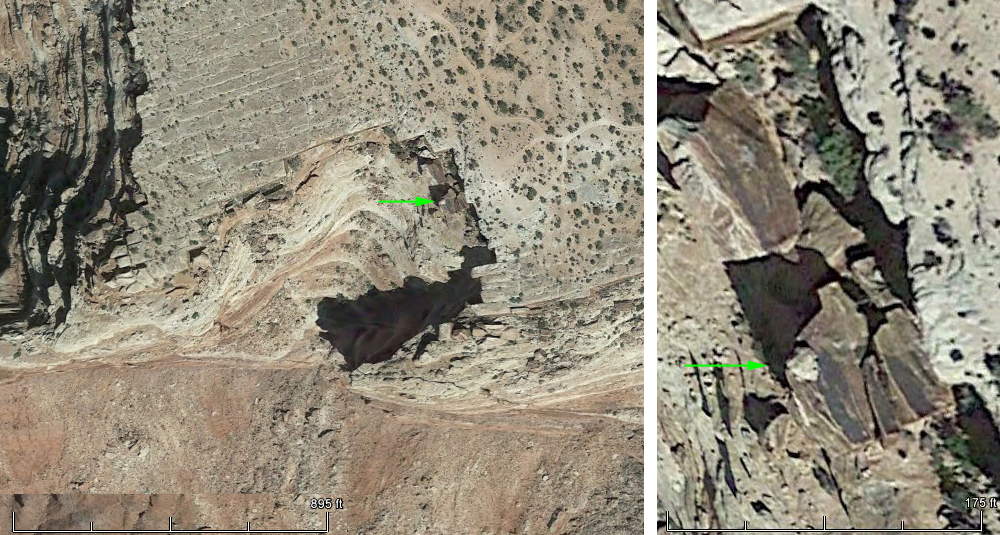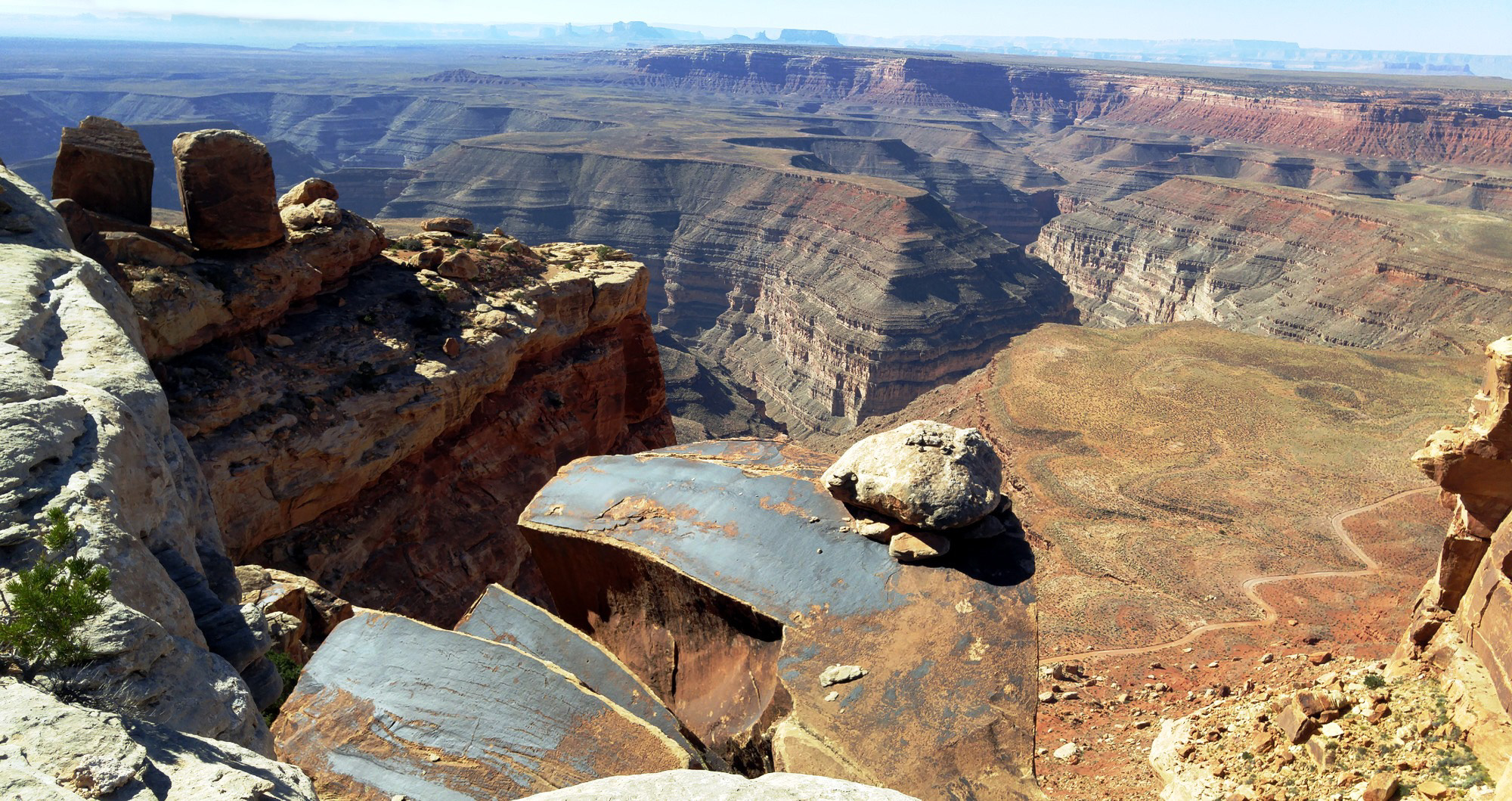|
If you have ideas about how the light colored rock got there, please post your explanation at the Earth Science Picture of the Day Facebook page. Here is my theory: - The light colored boulder ended up in its present position when the large, dark colored rectangular block collapsed into its present position.
- The block was one piece that broke into 3 pieces in the event (#7).
- The block had separated from the cliff along a vertical crack. We found nearby examples of vertical cracks a few inches to a few feet wide and 20-30 feet deep (on the far wall to left center of (#6) behind the tree). See also (#9).
- The pattern of the desert varnish in (#1 and #6) suggests that the right side of the block had a very narrow separation from the cliff and the left side had a wider separation. The desert varnish formed when the block was one piece and the separated wall was vertical.
- The white boulder was part of the rock layer covering the top horizontal surface of the block. Good examples showing this on the far wall are in the upper center of (#6).
- When the block collapsed, it rolled forward dragging the white layer with it. The white layer broke up and most of the debris slid down the now vertical face of the block and is far below in the talus at the bottom of the cliff.
- However, the puzzle rock was dragged behind the falling block and ended upon the uphill nearly horizontal surface.
- Or, notice on (#9) the lump on the right side of the crack is beginning to separate from the huge block. If the block were to tip to the right, it is possible that the lump might separate and slide to the left ending up in a similar position as the puzzle rock.
|

